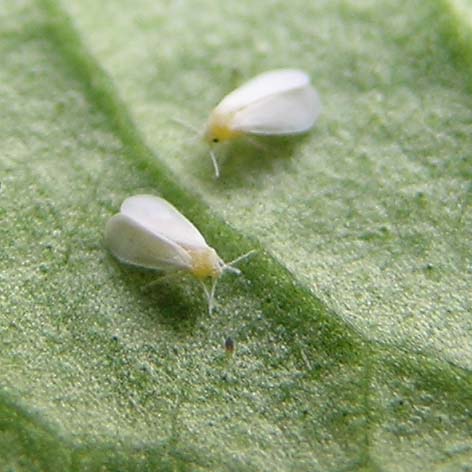Do not confuse with:
Silverleaf whitefly (Bemisia tabaci)
Greenhouse whitefly (Trialeurodes vaporariorum) This bright white ap
The greenhouse whitefly can also transmit various plant viruses.
Where to find
- Vegetable garden
- Cucumber family:
- Potato
- Tomatoes
- Houseplants
- Poinsettia (houseplant, greenhouse)
- African hemp
Control
Difficult to control. Remove infested plants. Spray with pyrethrum. The parasitoid wasp (commercially available) can also be used in greenhouse cultivation.
Prevention
Greenhouse whiteflies do not like drafts and a dry environment; some draft in the greenhouse on sunny days helps prevent whiteflies.
Some scents keep greenhouse whiteflies away, such as marigolds, basil and apple-of-Peru (Nicandra physalodes); plant these among plants in the vegetable garden and in the greenhouse.
The parasitoid wasp is a natural enemy and is used in horticulture in greenhouses to to control the grenhouse whitefly.
Provide the windows with insect-proof mesh at greenhouses to keep the flies out.
Remove weeds (because often host plants of the greenhouse whitefly) can maintain the infestation.

